The Lightweight Affordable Novel Combat Aircraft (LANCA) concept drone will be deployed alongside the F-35 and Typhoon.
The MoD say that the aim of the programme is based around offering increased protection, survivability and information for the manned aircraft – and could even provide an unmanned combat air ‘fleet’ in the future.
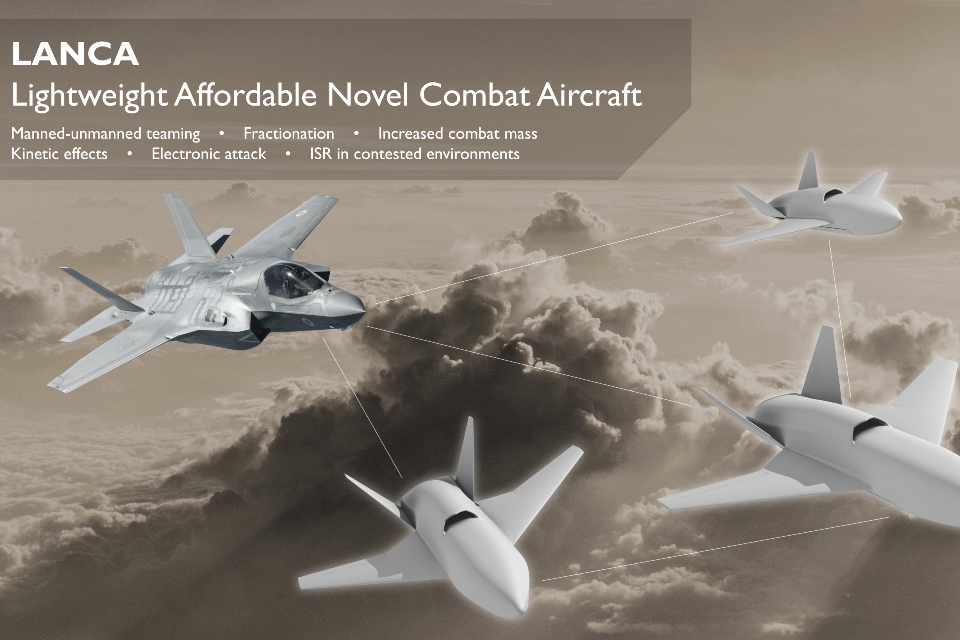
According to respected defence journalist Gareth Jennings at Janes, these capabilities “include, but are not limited to, the use of “loyal wingmen that see unmanned aircraft flown in concert with a manned aircraft, as well as swarming unmanned aircraft designed to overwhelm enemy air defences”.
@ChiefofAirStaff notes need to inc combat mass of RAF. “Volume is the key part to this [swarming UAV concept]. We have great capabilities in the RAF, but not much of it. This mass is what constantly concerns me – we need to create more targets in the air; we need to grow mass.”
— Gareth Jennings (@GarethJennings3) July 22, 2019
Specifically, say the MoD, in a break with traditional approaches for combat air systems in the UK, LANCA aims to deliver ‘dramatic reductions in traditional cost and development timeline’.
The MoD said in a release:
“Under LANCA, a technology demonstrator project known as ‘Mosquito’ has awarded contracts for Phase 1 of the work, which will produce a preliminary system design for an unmanned air vehicle and assessment of the key risk areas and cost-capability trade-offs for an operational concept. Initial flight test of the demonstrator air vehicle could take place as early as 2022.
Phase 1 will include the exploration of novel design, development, prototyping, manufacture, and support, to enable low-cost rapid development and evolution of a potential future unmanned combat air system. Dstl, which provides science and technology for the defence and security of the UK, is delivering the technical oversight, project management, and partnering for Project Mosquito.”
For Phase 1, contracts were awarded to three teams led by Blue Bear Systems Research Ltd, Boeing Defence UK Ltd, and Callen-Lenz (Team BLACKDAWN partnered with Bombardier Belfast and Northrop Grumman UK Ltd).
LANCA originated in 2015 studies to understand innovative Combat Air technologies and concepts that might offer radical reductions in cost and development time. Subsequently LANCA was brought into the RAF RCO as part of the Future Combat Air System Technology Initiative (FCAS TI).
Project Mosquito has two planned phases. After the 12-month Phase 1, Phase 2 will select up to two of the Phase 1 solutions to further mature the designs, complete manufacturing of the technology demonstrator and conclude with a limited flight-test programme.



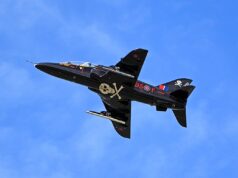
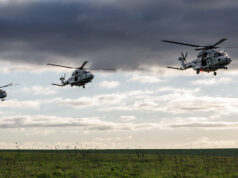

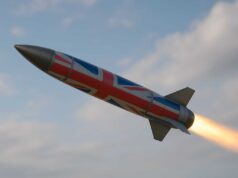
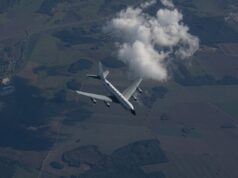
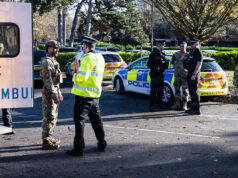

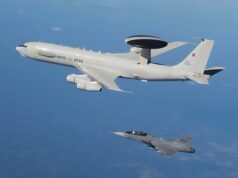
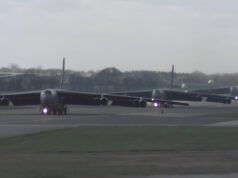
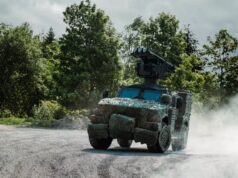

I’m a bit behind on this.
I presume these are autonomous? They take off and land on their own? Or is there someone in the loop controlling?
Is this the tech used with the BAC111 years ago by DERA?
How does Taranis fit in with these? Wish we would develop that and get that into service. Then sell it!
If there is someone controlling, that will go well considering how well the Watchkeeper training is progressing!
I’m also intrigued as to where they would be based. Getting ahead of myself I know.
I will say one thing – I certainly approve of the name!
We are a little behind the times when it comes to such technology – the media coverage at Gatwick highlighted some of our shortcomings. But overall, we lack mass and unmanned/autonomous platforms will go some way to rectifying that. I do feel that this should be explored more across all services, as unmanned platforms would go a long way to improving our capabilities. UAVs on B2 Rivers would be a case in point.
First guess at basing would be Waddington.
I think Waddo is pretty busy myself. Same for Lossimouth and Coningsby.
If they are to accompany F35 maybe they could go into Marham.
To be fair there are plenty of runways remaining on the MoD estate.
Personally I like Lanca. 🙂
All questions that I would love to know the answer to also Daniele, but they must be autonomous, the RAF surely won’t have the man power to man all of them from the ground in future unless we see an increase in personnel but then again we probably won’t get many of them so probably won’t need many new personnel. The idea looks good to give the RAF bigger punch though if we get enough.
The increasing recruitment issues are helped by this idea. Apart from the fighter pilot a ground control will be necessary but using pure ground-based trained personnel, which will be considerably cheaper than training fast jet pilots? The same level of the aurtominious system will be required for both the Royal Navy and Army. These systems are a win-win on so many fronts, from longterm lingering over targets to multiple attacks.
Until the enemy finds a way to take control & turn them on us.
Yeah, don’t they use actual pilots for our predator drones?
The comment on volume by the CAS is well warranted. The reduction in the RN surface fleet gets most mention, but lets not forget the RAF.
In the late 90’s there were 7 Tornado GR, 7 Tornado F3, 3 Jaguar, and 3 Harrier Squadrons. Plus the 2 Sea Harrier units. 22 Front line Squadrons.
Going back further it gets worse when one includes the remaining 2 Phantom and 2 Buccaneer Squadrons, and 2 cut Tornado Squadrons.
By 2010 numbers were down to 12. At one point the number was reducing to 6 until the older Typhoons were retained. Which in effect means squadron numbers are maintained by spreading out fewer aircraft.
I’ve been rightly reminded here before about the quality of Typhoon and F35 over these older jets, but the fact remains they cannot be in two places at once. Which HMG is hopefully discovering now in the Gulf.
Let’s hope we get more front line squadrons in the near future that weren’t planned. We have an economy bigger than Russia’s for gods sake.
The reason we have such depleted armed forces, size wise, is because HMG wills it so. Should they want to remove the reported 7 billion black hole, they could do at will.
They could do it anytime they want, but that’s how they justify cuts to our forces….
Interesting that the RAF typically has squadrons of 12 frontline fighter aircraft whereas the RAAF generally follows USAF model of 24 fighter aircraft to a squadron.
Based on the RAAF’s inventory (rather than counting actual stood up squadrons) of 108 aircraft (36 FA18 Super Hornets/Growlers plus like for like replacement of 72 classic Hornets with F35As) the RAAF has the equivalent number to 9 RAF squadrons.
Mate, your suggestion that the RAAF has Squadrons made up of 24 airframes is incorrect.
Yes there is one Sqn of 24 airframes, and that is No 1 Sqn, with 24 F/A-18F because it inherited 12 airframes from No 6 Sqn when the 12 (now 11) Growlers were delivered to it (was simpler and cheaper for No 1 Sqn to absorb those additional airframes rather than standing up a new training Sqn).
As far as the 4 Sqns (3 operational and 1 training) that are starting to convert from Classic Hornets to F-35A, they are neither 12 or 24 airframes per Sqn.
My understanding has been that those four Sqns are ‘nominally’ 16 airframes per Sqn, which totals 64 airframes, and the other 8 airframes (to make a total of 72 F-35A) are nominally rotated in and out as maintenance and attrition reserves.
As for the number of RAAF fighter Sqns, there are, and will continue to be, four operational Sqns (3 x F-35A, 1 x F/A-18F), and one training (1 x F-35A). The Growlers (whilst based on the Super airframe), are considered more as Electronic Attack aircraft rather than pure Fighters.
As it stands today, the only 12 airframe Sqn in the RAAF is the C-130J Sqn, all other Sqns these days vary significantly in airframes numbers.
Cheers,
JohnN
This is something I have been advocating for some time. An F35 with 4 taranis was my thought with the F35 providing the person in the loop element and all the jamming etc it is famous for. the taranis would conduct the deep strike with the pilot in a standoff position.
These things can be put in the air by a pilot if necessary and then put on an automated flight plan that can be altered by the “master pilot” in the F35.
We still need an increase in actual pilots, but this will allow us to leverage the F35 fleet.
Lastly and very importantly, if we can pull this off there is a massive export opportunity for us, in much the same way as the JSM has been for Norway.
Pac-Man, I see Taranis (if it’s ever built) as more of a lone deepstrike platform. It would be too expensive and large to act a pack of loyal wingmen assigned to a single manned jet. To properly leverage swarming advantages we need smaller craft costing around £1 million each, agility nearing missile capability and able to carry a range of mission modules ie electronic warfare, attack weapons, defensive missiles etc. Each one inthe swarm carrys out a particular task, with others able to step in should one be destroyed. The software will be key.
Their real worth will be when they can operate free from manned craft, where they can utilise their super agility to out manoeuvre manned jets and stand a fair chance against missiles. Imagine 30-40 of these swarming radar sites, with some up front jamming and spoofing creating total confusion while bomb carrying variants slip through to take out the radars and missile batteries whilst being protected by ones set up to dog fight enemy aircraft armed with meteor or asramm.
Then you would have larger aircraft such as Taranis loaded up going in deep to target other key sites with a higher chance of coming back. This role will be filled by a manned craft – Typhoon then Tempest for a while and I don’t think we will see a larger purely unmanned craft for a long time. Why develop Tempest to be optionally unmanned as well as Taranis to fill the same role?
That’s fine and I accept your proposal but for me Taranis being managed by F35 is the perfect solution and does solve a couple of issues. As we have the b variant we are short on range by pairing an F35 with 2-4 Taranis it can loiter in a safe zone and send the Taranis in for deep strike. Also the size of the vehicle is defined by its range, payload and stealth requirements therefore Taranis is perfectly sized for this activity. The mini uav concept associated with tempest is different to my proposal which could see a carrier loaded with 12-18 f35s and 36 taranis and fits in with our current operations and equipment model
it will be easier to assess once the maximum payload taranis can operate with is disclosed.
I feel that the MOD will simply waste a lot of money on this project, which will be not fit for purpose, well over budget and late, then add in the usual British Government spending plan of buying a lot less than what is required. I mean just look at how the MOD is currently wasting money evaluating APS systems for the Chally 2 when the Trophy is alrady a combat proven system.
I would rather the Uk joins up with the Australian Loyal Wingman’ Fighter Drone program which is already running. But hey, lets leave this to people on a much higher pay grade who obviously know what they are on about (Looks at Type 26 procurement program)
Yes seems like a missed opportunity
All the talk about increased defence cooperation with Australia appears to be only a one way street
The Australian Loyal Wing man is mainly Boeing trying to catch up on another US Program with Australia sharing the Risk such as in the Wedgetail in hope of Financial returns should it ever gain other markets . Though considering we cannot find enough pilots to crew our Fighters this would be advantageous in making up numbers , now all we need is autonomous ships as again we cant find people to crew our Fleet which right now might as well be called the British Pacific Fleet due to the high numbers of people from the UK who man our ships .
I thought there was a back-log of training pilots? We would have enough if we sorted that…
https://www.bbc.co.uk/news/uk-47420698
Precisely. The US Air Force has already test flown its XQ-58 under its Skyborg Program and hopes to have it ready in 2023. Why go with Boeing and Australia who are way behind instead of the USAF and Kratos?
To be fair the XQ58 and aussie loyal wingman are really two different aircraft in capabilities. The valkyrie under current plans will have some 500? Pound bombs and a range of 3900km while the aussie/boeing program is planned for air to air combat ground support ISR and said to have a combat range of 3700km. The loyal wingman if roles and specifications are to be believed will be superior to the valkyrie in every way. That said it is a longer term project with the GoA RAAF and Boeing not expecting to field it till 2030 (first flight planned for 2020) so the valkyrie may be a suitable interim asset .
I totally disagree with your evaluation that the wingman program will be superior to the Valkyrie. The Wingman has less range, 3300 km vs Valkyrie 3900 km, and has a strike capability. Wingman is designed for intelligence, surveillance, and EW. It has no air to air combat capability.
Actually commonly stated range is more then 2000 nautical miles or 3,700km, What is in conjecture is if that is that max range or the combat range as both have been claimed in media. The strike capability of the Valkyrie is also limited to SDB’s and JDAM’s while the LW does actually have an internal weapons bay its self. Should also note that the range of the Valkyrie has been widely misrepresented as it is 2,128 miles, Not nautical miles. So LW is give or take 300km more range. At present neither aircraft has an air to air combat capability but from where I am sitting the LW is designed to have new systems plugged in and play while the Valkyrie is built ground up with them already installed thus any new capabilities requires redesign. THey both literally do the same thing at present but the LW is just a larger version with more AI centric thinking and changeable mission profiles.
Totally agree, as soon as T31 is sorted to sort us short term we must develop a range of autonomous ships and submersibles.
I have commented before on our carriers being escorted by a larger number of smaller ships for filling different roles and spreading out capabilities so ignore one is sunk in the outer screen we don’t loose everything. Imagine asw, anti ship and aaw put onto an autonomous river 2 Hull.
Or more likely a autonomous river 2 hull with modular design, designed for but not fitted with a range of options.
Reality is none of this will be cheap and saving on man power is just part of the affordability issues.
Additionally I can’t help thinking they would be prime for hacking and turning on their own ships or plain just disabled.
i don’t think the type 31 will ever happen i think it’ll end up in the same filing cabinet that the bristol class ended up in
This would be a short term solution at best. The concern with volume comes from facing near peer enemies who have similar, or worse case scenario, more combat jets than us. Except in that scenario, where presumably we would have these unmanned drones making up the numbers in the RAF, the near peer enemy wpuld almost certainly have them as well, making the small amount of aircraft in the RAF once more an issue.
The problem with the is it’s current thinking around tech bit the actual implementation won’t be for another couple.fo.decades, in other words it’s out dated before it even is created. Which worked fine in the cold war, but in the modern world china can design and build a tech in a fraction of the time.and so we need to think more long term
Even getting down to more simplistic basics…. wouldn’t we be needing more 2 seat manned aircraft? I’d imagine that the workload of flying your own aircraft, whilst also controlling a couple of autonomous swarm or loyal wingman aircraft would be pretty high in all but the most benign environments.
Unsure how it would work with F35 but one of the key aspects to Tempest is meant to be that it will be optionally manned. This could mean that I’m such a scenario the pilot could control the drones and onboard weapons while the plane flies itself.
From there it’s a matter of time until we have autonomous drones controlling other drones.
time the u.k started its own aircraft design again the u.k has designed,built and operated some of the all time iconic aircraft, i can’t accept that we can’t do it again
Between the three different autonomous ucav programs taking place between australia America and the uk is there any room for joint development and knowledge sharing? Not proposing combining them all into one program because that will so often add time and cost but rather seeing if there is room for some systems to be used across the combined programs whole letting the individual nations have the final say on their own product. Just a thought.
I’m confused didn’t BAe already look into accompanying drones as part of FOAS, Back in the early 90’s? & What’s happening with Taranis? It’s been 2 years since the Anglo-French feasibility study & should have finished by now. I would have liked to see Taranis replace the Canberra in the intelligence roll.
I fear that if these are cheaper, and they ought to be, they could be used as an reason(excuse) to cut back on manned aircraft.